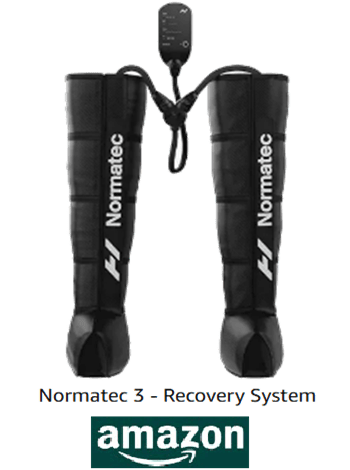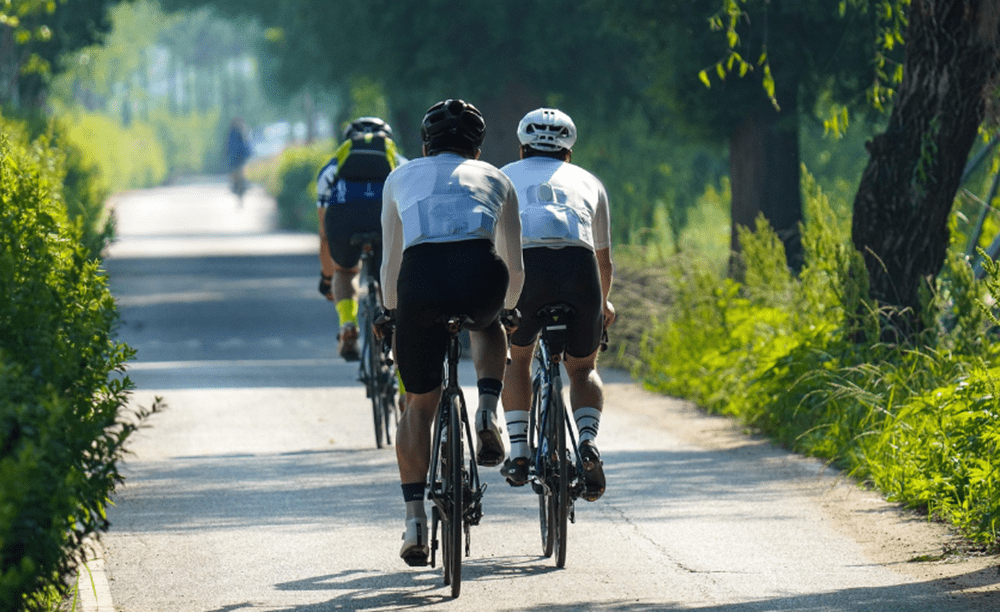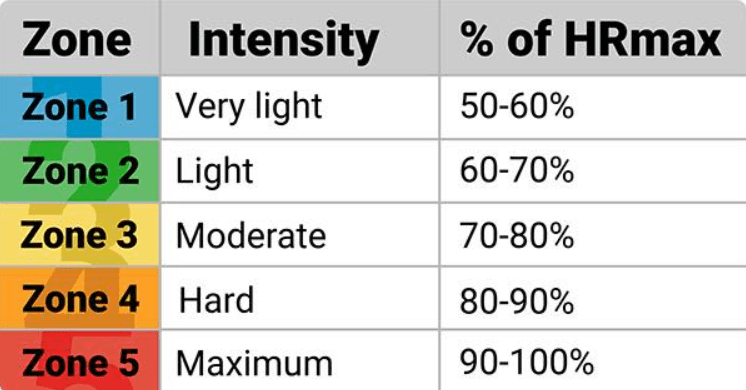Contents
- 1 The Often-Overlooked Power of Easy Training
- 1.0.1 II. The 5 Ways Easy Training Fuels Performance and Prevents Injury
- 1.0.2 Way #1: Building a Rock-Solid Aerobic Foundation for Enhanced Endurance
- 1.0.3 Way #2: Accelerating Recovery and Supercharging Subsequent Hard Efforts
- 1.0.4 Way #3: Fortifying the Body Against Overuse and Injury
- 1.0.5 Way #4: Enhancing Training Adaptations and Overall Fitness Gains
- 1.0.6 Way #5: Improving Movement Efficiency and Technique at Lower Stress
- 1.1 III. Implementing Easy Training Effectively: Key Considerations for Cyclists
- 1.2 IV. Conclusion: Unlock Your Cycling Potential by Embracing the Easy Path
Competitive Cyclist Sale Going On Now!
The Often-Overlooked Power of Easy Training
Are you caught in the relentless pursuit of pushing harder, believing that every workout needs to leave you breathless and aching? Start by challenging the “no pain, no gain” mentality and introduce the surprising benefits of easy training. It’s a common misconception in the fitness world, but often, the key to unlocking your true athletic potential lies not in constant intensity, but in strategically incorporating lower-effort sessions.
Think of these workouts as the foundational blocks upon which your peak performance is built. They might feel less demanding in the moment, but their cumulative impact on your body’s ability to adapt, recover, and ultimately excel is profound.
This article will delve into the science and practical application of this often-underappreciated aspect of a well-rounded training program. Get ready to discover how slowing down can actually speed up your progress and keep you consistently doing what you love.
We’ll explore how easy training builds a robust aerobic engine, accelerates your body’s recovery processes, fortifies you against common overuse issues, enhances your overall physiological adaptations for greater fitness gains, and even refines your movement efficiency. Prepare to rethink your approach to exercise and unlock the hidden power of going easy.
II. The 5 Ways Easy Training Fuels Performance and Prevents Injury
Way #1: Building a Rock-Solid Aerobic Foundation for Enhanced Endurance
Easy training on the bike creates a powerful foundation by developing your cardiovascular system—the energy pathway responsible for sustainable, long-duration riding performance. When you cycle at lower intensities (typically 55-75% of your functional threshold power or in heart rate zones 1-2), your body becomes more efficient at using oxygen and fatty acids as fuel while producing fewer stress hormones like cortisol.
Garmin Edge 530 Sensor Bundle, Performance GPS—featuring real-time heart rate zone tracking, power analysis, and customizable displays to optimize your low-intensity workouts for maximum cardiovascular development.” LEARN MORE ➡️
These zone 2 rides improve your cycling endurance by strengthening the heart muscle, increasing stroke volume, and enhancing the efficiency of oxygen transport to working leg muscles. The steady, rhythmic pedaling during low-intensity sessions teaches your body to burn fat more effectively, sparing precious glycogen stores for when you really need them during intense climbs or race situations.
This improved aerobic capacity allows you to sustain higher power outputs for longer periods during harder riding sessions and competitions. A cyclist with a well-developed aerobic engine can maintain tempo efforts with less perceived exertion, push harder on climbs without going into oxygen debt, and recover faster between intense efforts during interval sessions. By incorporating regular easy training rides of 1-3 hours, you’re building the metabolic infrastructure that supports all aspects of cycling performance, from weekend group rides to competitive events.
Way #2: Accelerating Recovery and Supercharging Subsequent Hard Efforts
Active recovery through easy training creates a regenerative environment that accelerates your body’s healing processes after demanding rides. Low-intensity spinning increases blood flow to fatigued leg muscles without creating additional muscle breakdown, helping to flush out inflammatory markers and deliver nutrients essential for repair. This is why professional cyclists often incorporate “coffee rides” or “spin-out” sessions the day after intensive training blocks or races.
This recovery-boosting effect works on multiple time scales in your cycling program. Within a single structured workout, easy pedaling between high-intensity intervals helps clear lactate and restore energy systems. Between training days, recovery rides promote healing while maintaining cycling-specific movement patterns, reducing muscle soreness, and replenishing glycogen stores more efficiently than complete rest.
The beauty of this approach is that you maintain training consistency without the diminishing returns that come from stacking hard riding sessions. By incorporating proper recovery through easy training, you’ll arrive at your threshold sessions, VO2max intervals, or weekend group rides with fresher legs and greater focus. This leads to better training quality and performance gains, keeping your cycling fitness on an upward trajectory rather than the plateau-and-decline pattern that often accompanies an all-intensity approach.
Way #3: Fortifying the Body Against Overuse and Injury
The relationship between training intensity and injury risk operates on a delicate balance for cyclists. Too many hard rides without adequate recovery leads to chronically elevated stress hormones, compromised immune function, and a significantly increased risk of overuse injuries like patellar tendinopathy, IT band syndrome, and lower back pain.
Easy days allows your cycling body to adapt gradually to the stress of training without overloading it. These gentler pedaling sessions strengthen connective tissues—tendons, ligaments, and fascia—which adapt more slowly than muscles yet are crucial for preventing common cycling injuries. The progressive loading that occurs during moderate-duration, low-intensity rides helps these tissues become more resilient over time, particularly around the knee joint, which bears significant stress during thousands of pedal strokes.
“Supercharge your between-ride recovery with the Normatec 3 Compression System—clinically proven to flush metabolic waste and reduce inflammation, helping your cardiovascular system rebuild stronger for tomorrow’s training zones.” LEARN MORE ➡️
Easy days also play a critical role in balancing the stress of harder cycling sessions and preventing burnout. They provide a necessary counterbalance to the mechanical and metabolic demands of high-intensity work, allowing joints, bones, and muscles to strengthen without breaking down. Many elite cyclists incorporate at least 2-3 easy training days each week, even during peak preparation phases, recognizing that these sessions are essential for long-term durability and consistency.
Way #4: Enhancing Training Adaptations and Overall Fitness Gains
A balanced cycling program with easy days allows for optimal physiological adaptations that go far beyond what high-intensity training alone can provide. Contrary to popular belief among recreational riders, these easy days are not “junk miles” but are crucial for laying the groundwork for greater gains from your harder workouts.
Easy training drives important cellular adaptations critical for cycling performance, particularly improving mitochondrial density—the energy production factories within muscle cells—and capillary density, which enhances oxygen delivery to working quadriceps, hamstrings, and glutes. Research shows that steady, prolonged riding at lower intensities is particularly effective at stimulating these specific adaptations that contribute to long-term cycling efficiency.
The physiological benefits extend throughout your entire system. Your leg muscles become more efficient at utilizing oxygen and fat for fuel, your heart adapts to pump more blood with each beat, and your body becomes more adept at clearing metabolic byproducts produced during intense efforts. By strategically incorporating easy training rides of 60-180 minutes, you create the optimal physiological environment for consistent, sustainable improvements in your cycling power and endurance across all energy systems.
Way #5: Improving Movement Efficiency and Technique at Lower Stress
High-intensity cycling creates fatigue that inevitably compromises form. When you’re gasping for air during a steep climb or pushing through lactic acid burn in the final miles, pedaling technique naturally suffers. Easy training offers the perfect opportunity to reinforce proper cycling mechanics without the interference of extreme fatigue.
During low-intensity sessions, your neuromuscular system can focus on skill acquisition and refinement rather than merely surviving the effort. This is particularly valuable for developing a smooth, efficient pedal stroke—one of the most important yet often overlooked aspects of cycling performance.
By concentrating on pulling through the bottom of the pedal stroke and engaging the hamstrings and glutes during easy rides, you can develop more powerful and efficient pedaling mechanics that reduce wasted energy. Consider easy training as deliberate practice for cycling technique.
You might focus on maintaining a steady cadence of 85-95 RPM, practicing climbing techniques with less resistance, or working on your aerodynamic position without the distraction of high power demands. The movement patterns you groove during these sessions become your default settings when intensity escalates.
Elite cyclists often use easy days specifically for technique work, knowing that these sessions build the foundation for better efficiency and reduced injury risk during harder efforts, from sprints to mountain passes.
III. Implementing Easy Training Effectively: Key Considerations for Cyclists
Incorporating easy training into your cycling program isn’t merely an option—it’s essential for sustainable performance development. The most successful cyclists, from Grand Tour contenders to weekend warriors, recognize that strategic low-intensity riding forms the cornerstone of effective training. Let’s explore how to implement easy training effectively in your cycling routine.
Finding Your Cycling “Easy Zone”
For cyclists, “easy” typically means:
- Power output at 55-70% of your Functional Threshold Power (FTP)
- Heart rate in Zone 1 or Zone 2 (typically 60-75% of maximum)
- Breathing that allows for “conversational pace”—you should be able to comfortably chat with a riding partner
- Perceived exertion of 3-5 on a 10-point scale. Leg muscles that feel refreshed rather than fatigued the following day

The popular cycling metrics of power and heart rate provide objective measures to ensure your easy training stays truly easy. Many cyclists benefit from using a power meter or heart rate monitor to maintain discipline during recovery rides, as perceived effort can be misleading, especially when riding in a group or on varying terrain.
Structuring Easy Training in Your Cycling Week
For most amateur cyclists, a well-structured week might include:
- 2-3 quality sessions (intervals, threshold work, or group rides)
- 2-3 easy training rides
- 1-2 complete rest days
Your easy rides should vary in duration based on your overall training volume and goals. A recreational cyclist might include 30-60 minute recovery spins, while more serious riders might extend easy training rides to 90-180 minutes to build aerobic endurance without accumulating fatigue.
Strategically place these sessions after demanding workouts or races.
Many cyclists find that an easy spin the day after a hard group ride or interval session accelerates recovery while maintaining rhythm on the bike. This approach creates a natural polarization in your training, maximizing both adaptation and recovery.
Listening to Your Body and Adjusting Accordingly
The most effective cyclists develop an acute awareness of their body’s signals and adjust their easy training accordingly. If you’re experiencing persistent fatigue, elevated resting heart rate, or decreased motivation, consider extending your easy training period before returning to intensity.
Remember that terrain significantly impacts effort—what feels easy on flat roads may become moderate or hard on climbs. When incorporating hills into easy rides, shift to an easier gear and focus on maintaining your heart rate or power within your easy zone rather than worrying about speed. Some cyclists even use different routes for their recovery rides, choosing flatter terrain to ensure the session remains truly easy.
Diversifying Your Easy Training Approach
While consistent easy riding forms the foundation of any cycling program, variety enhances both physical and mental freshness. Consider incorporating different types of easy training:
- Recovery spins on flat terrain
- Technique-focused easy rides (working on pedal stroke, position, or cornering)
- Cross-training with other low-intensity activities like swimming, yoga, or walking
- Indoor trainer sessions at precisely controlled power levels
- Easy gravel or off-road riding on smooth trails (providing mental variety while maintaining low physical stress)
Many professional cyclists incorporate non-cycling activities into their easy training regimen, recognizing the benefits of movement patterns that complement rather than replicate their primary sport. This approach reduces the repetitive stress of cycling while maintaining cardiovascular conditioning.
The disciplined approach to incorporating true training may feel counterintuitive initially, but the compound benefits—enhanced endurance, accelerated recovery, injury resilience, improved adaptation, and refined technique—will ultimately elevate every aspect of your cycling experience.
IV. Conclusion: Unlock Your Cycling Potential by Embracing the Easy Path
The most successful cyclists understand that sustainable performance isn’t built through intensity alone—it’s crafted through the strategic balance of hard efforts and easy training. As we’ve explored throughout this article, incorporating low-intensity riding delivers five crucial benefits that collectively transform your cycling journey:
First, easy training builds the rock-solid aerobic foundation essential for cycling endurance, developing your cardiovascular system through those steady Zone 2 rides that improve oxygen utilization and fat metabolism.
Second, these recovery-focused sessions accelerate healing between harder efforts by increasing blood flow to fatigued muscles, clearing metabolic waste, and replenishing glycogen stores—allowing you to attack your next interval session or group ride with fresher legs and sharper focus.
Third, gentle pedaling sessions fortify your body against the overuse injuries that plague many cyclists, strengthening connective tissues around critical joints that must withstand thousands of pedal strokes.
Fourth, easy training enhances the physiological adaptations that define cycling performance, from increased mitochondrial density in leg muscles to improved capillary networks that deliver oxygen more efficiently during climbs and sprints.
Finally, these lower-stress rides provide the perfect opportunity to refine pedaling mechanics and position on the bike, grooving efficient movement patterns without the interference of fatigue.
Far from being “junk miles” or wasted training time, easy training represents the active, intentional foundation upon which cycling excellence is built. These sessions aren’t passive recovery—they’re purposeful investments in your body’s adaptive processes.
Professional cyclists understand this principle intuitively, which is why even during peak preparation for major competitions, they still dedicate significant training volume to rides well below threshold intensity.
As you develop your cycling program, challenge yourself to embrace the discipline of true easy training. This might mean setting ego aside when your power numbers seem “too low” or letting the group ride ahead while you maintain your recovery pace.
The cyclists who thrive long-term aren’t those who crush every workout, but those who strategically balance stress and recovery through intelligent training distribution.
 |
 |
 |
We earn from qualified Amazon purchases with NO cost to you. ANY item that you need or were going to purchased anyway through any of our links, helps support this site. Thank you for your support!
If you enjoyed learning about this week’s featured bicycle, don’t miss out on more classic bike goodness! Visit our website at classicjapanesebicycles.com for an extensive collection of timeless Japanese bikes and their unique stories. Plus, check out our YouTube channel, Bicycle Restoration Man, for detailed restoration videos and showcases of our finished projects. Subscribe and join our community of bike enthusiasts!












